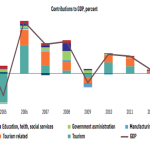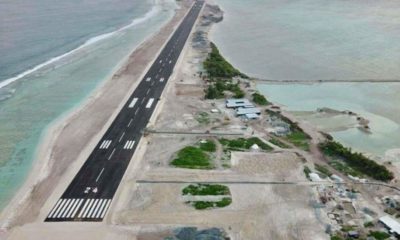The global credit ratings agency Moody’s has assigned a first-time bond issuer rating with a stable investment outlook to the Maldivian government.
With its first sovereign credit rating, the Maldives became the 5th smallest nation by GDP that the Moody’s Investor Service rates, the company said in a press release on Sunday.
Moody’s, one of the top three credit rating agencies in the world, ranks the creditworthiness of borrowers on a scale of Aaa to C, which measures investor loss in the event of default with C representing the lowest quality.
The Maldives was assigned a local and foreign currency issuer rating of B2, which is considered “speculative and subject to high credit risk.”
According to Moody’s, the rating and outlook reflect healthy growth prospects driven by the tourism sector, low institutional strength, a high debt burden, and “moderate susceptibility to event risks, predominantly driven by domestic politics.”
Despite the ‘not prime’ rating, ministers, ruling party lawmakers, and government supporters celebrated the Moody’s publication yesterday as a victory for President Abdulla Yameen’s economic policy.
The ratings represent “a clear benchmark for future progress” and shows the transparency of the current administration, said Economic Development Minister Mohamed Saeed.
“We are gaining global acceptance,” he tweeted.
But opposition figures questioned the value of the “junk” rating.
Opposition MP Fayyaz Ismail went further and alleged that the government is laying the groundwork for “a money laundering mechanism”.
Moody’s also assigned a Ba1 ceiling for local-currency bonds and deposits, a Ba3 ceiling for foreign-currency bonds and a B3 ceiling for foreign-currency deposits.
The agency’s estimate for medium-term GDP growth is between 3.20 to 4.5 percent, well below the government’s forecast of 6.4 percent.
On the other factors it considered for the rating, Moody’s said its assessment of low institutional strength “reflects Maldives’ relatively weak rankings on the World Bank’s Worldwide Governance Indicators, data limitations, and a lack of adherence to budgetary targets.”
Inflation is low “but fairly volatile,” it added.
The assessment of susceptibility to event risk is based on the domestic political situation: “If ongoing tensions continue to escalate, leading to prolonged political uncertainty, the struggle for power between political parties could adversely affect the nature and effectiveness of policies and durably weigh on tourism activity, investment and growth.”
The government’s debt is meanwhile “significantly higher than peers” and is projected to rise due to large-scale infrastructure development projects such as the China-Maldives Friendship bridge and airport expansion.
“This anticipated rise in debt, coupled with a sizeable proportion of foreign-currency denominated borrowing that subjects debt servicing to exchange rate movements, act as fiscal constraints,” Moody’s observed.
“However, debt affordability is supported by a large revenue base and predominantly concessional debt.”
The International Monetary Fund warned earlier this year that the Maldives is now facing “a high risk of external debt distress” due to large increases in capital spending, which are wholly financed by external debt.
The ambitious projects could be transformative in the long-run, the IMF said, but poses financing risks due to persisting fiscal imbalances.
With government expenditure outstripping income in recent years, public debt reached 67 percent of GDP at the end of 2015, according to the central bank.
The revenue shortfalls were plugged through the sale of treasury bills and bonds. The bulk of deficit financing is met from domestic sources such as commercial banks, the pension fund, and private businesses.
As of July 2016, the outstanding stock of government securities amounted to MVR21.2 billion (US$1.3 billion).
“[The IMF] projects that public debt could reach 121 percent of GDP in 2020; and would continue rising, substantially above in the Fiscal Responsibility Law (FRL),” the IMF report warned.
“The risk of external debt distress has deteriorated to a high risk rating.”





















